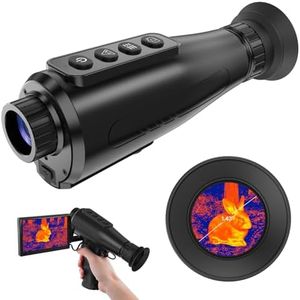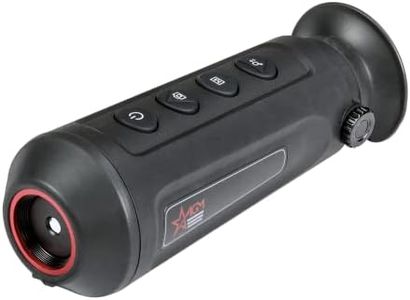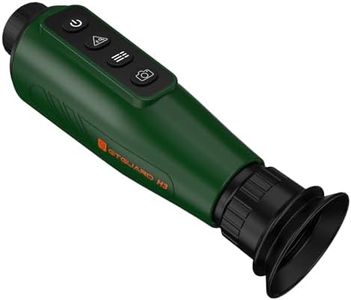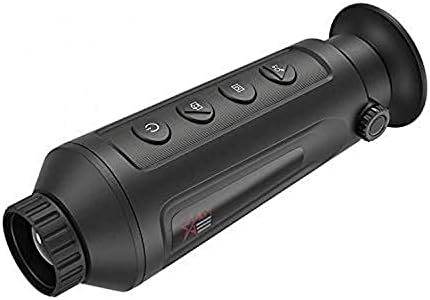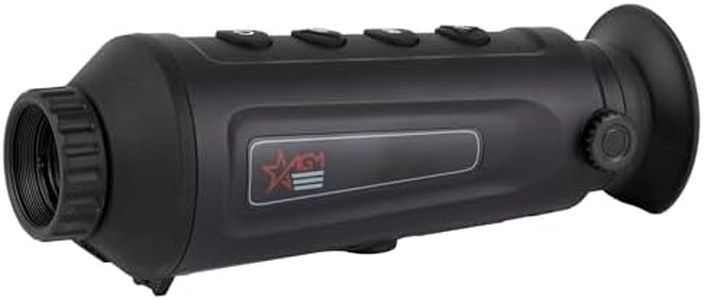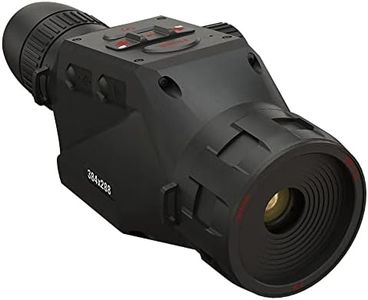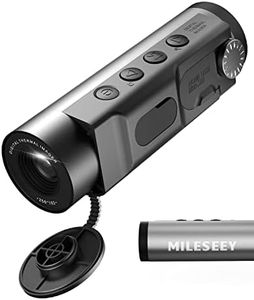We Use CookiesWe use cookies to enhance the security, performance,
functionality and for analytical and promotional activities. By continuing to browse this site you
are agreeing to our privacy policy
10 Best Thermal Sights
From leading brands and best sellers available on the web.Buying Guide for the Best Thermal Sights
Picking the right thermal sight is all about understanding how you'll use it, whether for hunting, security, or other outdoor activities. Instead of just going for the biggest or most expensive model, try to match the features to your actual needs. Think about the typical range you'll be observing, the kind of targets, and the environmental conditions you'll face. It's important to balance the necessary image quality and performance with practical needs like portability and ease of use. Remember, the ideal thermal sight is the one that best fits your personal requirements, not just the one with the highest specs.Sensor ResolutionSensor resolution refers to the number of pixels the thermal sensor uses to create an image, and it mostly affects how sharp and detailed your thermal image appears. Higher resolutions provide clearer, more detailed pictures, which can help you identify objects at longer distances or distinguish between similar-looking things. Common resolution segments are low (around 160x120), mid (320x240), and high (640x480 or above). If you need clear identification over longer distances or in tricky environments, a higher resolution makes sense. For closer ranges or basic spotting, lower resolutions can work well and often use less battery. Match the resolution to how much detail you really need.
Detection RangeDetection range tells you how far the thermal sight can spot a heat source, such as a person or animal. It's determined by the sensor quality and the lens. Shorter ranges are usually under 500 meters, suitable for woodland or close-range activities. Medium ranges (up to 1000 meters) are good for more open fields, while long-range models can detect heat beyond 1000 meters, useful for extensive open spaces. Choose a detection range that matches your typical environment—there's no need for extreme distances if you usually operate in thick forests or tight areas.
Field of View (FOV)Field of view (FOV) tells you how wide an area you can see at once through the thermal sight. A wide FOV is better for scanning broad regions or tracking moving targets but shows less detail of distant objects. A narrow FOV zooms in more but covers a smaller area, which is useful for long-range spotting. If you need to search large, open areas or quickly spot movement, pick a wider FOV. For identifying distant objects or focusing on specific targets, a narrower FOV is preferable.
Refresh RateRefresh rate is how quickly the image updates per second, measured in Hertz (Hz). A higher refresh rate means smoother motion, which can make it easier to track moving targets or scan areas quickly. Lower refresh rates (around 9-30Hz) might be fine for slow-moving or static observation, but higher refresh rates (50-60Hz and above) are better for active use or fast-moving situations. Consider how fast your targets move and whether image smoothness will help you.
Battery LifeBattery life is simply how long the device can run on a single charge or set of batteries. If you'll be outdoors for long stretches without easy access to power, choose a model with longer battery life. Short sessions or situations where recharging is easy mean you can be more flexible here. Always consider how and where you'll actually use the thermal sight to pick what suits your typical outing time.
Weight and SizeThe weight and size affect how comfortable and practical your thermal sight is to carry and use. Lightweight and compact models are easier to handle and mount on rifles or helmets, making them ideal for mobile users who walk long distances. Larger or heavier models may have more features or better optics but can tire you out faster. Match the thermal sight's bulk to your physical needs and how mobile you expect to be during use.
